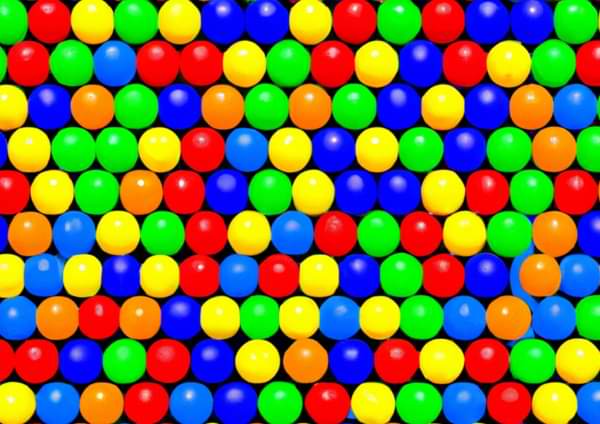{{ article.displayTitle }}
| | {{ 'ml-lesson-number-slides' | message : article.intro.bblockCount }} |
| | {{ 'ml-lesson-number-exercises' | message : article.intro.exerciseCount }} |
| | {{ 'ml-lesson-time-estimation' | message }} |

However, there are situations where making predictions is more challenging. In such cases, probability can be used to arrive at informed decisions and determine the likelihood of events happening. These concepts will be explored in this lesson.
Catch-Up and Review
Here are a few recommended readings before getting started with this lesson.
Recording Die Rolls

Probability
Probability measures the likelihood that something will occur. It can be any value from 0 to 1 or from 0% to 100%, inclusive. When it is certain that the situation will not occur, the probability is 0. Likewise, when it is certain that the situation will occur, the probability is 1.

Classifying Statements
Kevin and Davontay want to finish their homework quickly so they can convince their parents to take them out for burgers. Their assignment requires them to categorize a set of statements based on their probability.
| Statement (Probability of) | |
|---|---|
| A | Drawing a card with the number 14 from a standard deck |
| B | Independence Day will be on July 4th |
| C | A coin toss resulting in heads |
| D | Being born on leap day |
| E | Getting a number greater than 1 on the roll of a standard die |
Hint
Analyze each statement one at a time. Weigh the chances of the outcome happening against the chances of it not happening.
Solution
Each statement will be analyzed one at a time to determine its likelihood.
Option A
Look at the given statement.
|
Drawing a card with the number 14 from a standard deck |
A standard deck has 52 cards divided into four suits — spades, clubs, hearts, and diamonds. Each suit has 14 cards which include an ace, a 2, a 3, a 4, a 5, a 6, a 7, a 8, a 9, a 10, a jack, a queen, and a king. Drawing a card with the number 14 is impossible since no such card exists in the deck.
Option B
Now, consider the second statement.
|
Independence Day will be on July 4th |
Independence Day is always celebrated on July 4th, so it is a guaranteed occurrence. It will happen.
Option C
Consider the third statement.
|
A coin toss resulting in heads |
When flipping a coin, there are only two possible outcomes — heads or tails. Because both outcomes have an equal chance of occurring, the likelihood of getting heads is the same as the likelihood of not getting heads.
Option D
Let's breakdown the given statement.
|
Being born on leap day |
Leap Day, February 29, is added to the calendar every four years, so it takes three years before it happens again. As a result, being born on Leap Day is unlikely to happen.
Option E
Consider the final statement.
|
Getting a number greater than 1 on the roll of a standard die |
A standard die has six sides with numbers from 1 to 6. Getting a number greater than 1 is likely to happen because most outcomes are greater than 1.
Conclusion
All statements have been analyzed. The results are summarized in the table below.
| Statement (Probability of) | Likelihood | |
|---|---|---|
| A | Drawing a card with the number 14 from a standard deck | Will not happen |
| B | Independence Day will be on July 4th | Will happen |
| C | A coin toss resulting in heads | Equally likely to happen or not happen |
| D | Being born on leap day | Unlikely to happen |
| E | Getting a number greater than 1 on the roll of a standard die | Likely to happen |
Experiment - Probability

Outcome
An outcome is a possible result of a probability experiment. For example, when rolling a six-sided die, getting a 3 is one possible outcome.

Event
An event is a combination of one or more specific outcomes. For example, when playing cards, an event might be drawing a spade or a heart. For this event, one possible outcome is drawing the A♠ or drawing the 7♡.

However, these are not the only outcomes of this event. All the possible outcomes that satisfy the event are listed below.
The probability of an event is a ratio that compares the number of favorable outcomes to the number of possible outcomes.
P(event)=Number of possible outcomesNumber of favorable outcomes
Burger Restaurant: Hot Wheel and Book Probabilities
Davontay and Kevin finish their homework, and it is now time to order burgers! They each ordered a happy meal. Davontay choose the meal set that gives away a toy car. He hopes to get a Twin Mill Hot Wheel. Kevin, on the other hand, ordered a meal that offers a book. He hopes to get the book The Sparkle Tales
. 
Hint
The Sparkle Tales? Calculate the ratio of the number of favorable outcomes to the number of possible outcomes.
Solution
The Sparkle Tales. This yields one favorable outcome out of five possible outcomes.
Complementary Events

The Ball Pit
Kevin was able to get the book he wanted, but Davontay, unfortunately, did not get the Twin Mill he had hoped for. To cheer Davontay up, Kevin took him to the ball pit and made a bet. He challenged Davontay to pick one ball from the pit blindly. If the ball he picks is not red, Kevin will give his extra Twin Mill that he has at home to Davontay.
Assume there are 240 balls, equally divided into blue, red, yellow, green, pink, and orange balls. What is the probability of Davontay selecting a non-red ball? Answer in fraction form.Hint
Consider that the sum of the probabilities of two complementary events equals 1.
Solution
Uniform Probability Model

Spin the Roulette and Win!
Davontay and Kevin were given four games to choose from, but they could only pick one. Winning the selected game will earn them a prize.

Hint
Find possible and favorable outcomes for each event. Consider that each outcome has an equal chance of occurring under the uniform probability model.
Solution
The probability of each event will be determined by analyzing all possible outcomes and their corresponding favorable outcomes. In addition, given that each experiment follows a uniform probability model, the probability of each outcome occurring is equal.
Picking a Multiple of 4
This experiment consists of picking a number from the set formed by the numbers from 1 to 20. The event of interest is that the chosen number corresponds to a multiple of 4. Begin by highlighting the multiples of 4 from the given set.

Drawing a Red Card
A standard deck of cards consists of 52 cards divided into four suits — spades, clubs, hearts, and diamonds. The colors of the suits are red for hearts and diamonds and black for spades and clubs.

Landing on Blue
The roulette wheel is divided into three equal sections representing the different possible outcomes. Of these three outcomes, only one is colored blue, representing the only favorable outcome.

Therefore, the probability of landing on the blue section is given by 31.
Picking the Letter M
For this experiment, a letter will be randomly selected from the English Alphabet. The event is to get the letter M and every letter has an equal chance of being chosen.

Since there are 26 letters in the alphabet and only one of those is the letter M, the probability of selecting the letter M is 261.
Conclusions
All games have been analyzed. The table below pairs each of them with their corresponding probability.
| Game (Experiment) | How to Win (Event) | Probability of Winning |
|---|---|---|
| Randomly picking a number from the set formed by the numbers from 1 to 20 | Picking a multiple of 4 | 41 |
| Randomly drawing a card from a standard deck of cards | Drawing a red card | 21 |
| Spinning a 3-colored roulette wheel evenly divided | Landing on blue | 31 |
| Randomly selecting a letter from the English Alphabet | Picking the letter M | 261 |
Out of all the games available, the likelihood of drawing a red card from a standard deck of cards is higher. Therefore, if Davontay and Kevin want to increase their chances of winning, they should choose this game.
Frequency
Frequency refers to how often an event or occurrence happens. In probability, frequency describes the number of times an event or outcome occurs in repeated trials or experiments. It is often used to estimate the probability of that event. For example, rolling a die 1000 times and recording the frequencies of the different outcomes.

Theoretical Probability
When all outcomes in a sample space are equally likely to occur, the theoretical probability of an event is the ratio of the number of favorable outcomes to the number of possible outcomes.
P(event)=Number of possible outcomesNumber of favorable outcomes

.
Experimental Probability
Experimental probability is the probability of an event occurring based on data collected from repeated trials of a probability experiment. For each trial, the outcome is noted. When all trials are performed, the experimental probability of an event is calculated by dividing the number of times the event occurs, or its frequency, by the number of trials.

Kevin and Davontay's Fun Roulette Experiment: Chasing the Big Prize!


Hint
Solution

| P(Theme Park Passes) | |
|---|---|
| Experimental Probability | Theoretical Probability |
| 203=0.15 | 61=0.16 |
It is reasonable to conclude that the experimental probability is close to the theoretical probability because 0.15 is close to 0.16.
Combining Events
This lesson discussed simple events and their probabilities. These are events that cannot be broken down further and only have one outcome. However, events can also be made up two or more simple events. To illustrate this, consider the example of flipping a fair coin and rolling a fair six-sided die.

In this experiment, multiple individual events or outcomes are combined to create compound events. Examples include getting heads (H) on a coin and rolling a 3 on the die, or getting tails (T) on the coin and rolling a 6 on the die.
| Flipping a Coin and Rolling a Die | |||||
|---|---|---|---|---|---|
| Possible Outcomes | |||||
| (H,1) | (H,2) | (H,3) | (H,4) | (H,5) | (H,6) |
| (T,1) | (T,2) | (T,3) | (T,4) | (T,5) | (T,6) |
